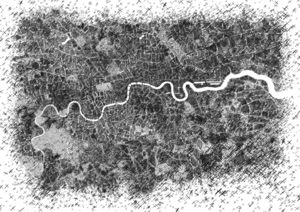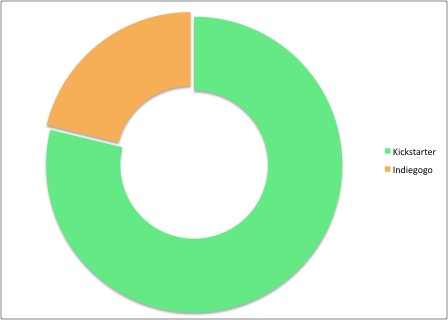Difference between revisions of "66 Art Crowd Funding Projects in London 2014"
Zara.worth (Talk | contribs) |
Zara.worth (Talk | contribs) m |
||
| Line 26: | Line 26: | ||
==The Surveyed Projects== | ==The Surveyed Projects== | ||
| − | + | ===Breakdown of the Surveyed Projects=== | |
| − | [[File: | + | [[File:Surveyed_Projects_Kickstarter_and_Indie_Chart.jpg|center|600px|Of the surveyed Projects, 52 were funded on Kickstarter and 14 were funded on Indiegogo]] |
Revision as of 01:39, 12 March 2015
Contents
[hide]The Project
The premise of this project began with data gathering; in sympathy to other projects featured on this Wiki, such as 100 Projects of Crowd Funding In Architecture, or more specific case studies, such as the insights into + Pool and The People's Opera New York City Opera. As the rather dry title (66 Art Crowd Funding Projects in London 2014) suggests, the initial task was to gather data on Crowd Funding within certain self-imposed perimeters defined to lend coherence to the data gathered.
Project Restrictions
The restrictions and stipulations for inclusion in the survey were as follows:
- The Project must have been successfully funded in 2014
- The Project must be based in London
- The Project must describe itself as 'Art' or 'Contemporary Art'
- The Project must have used either Kickstarter or Indigogo
Methodology Rationale
As previously mentioned, the most obvious reason for imposing restrictions on the selection of Projects to survey was to contain the data gathered and make it manageable. As an emerging trend it was logical to set the time constraints as recently as the last year, and make the location boundaries relevant to my own locale. Including only successful projects was much simpler than defining a percentage over which could still be deemed a success despite not having achieved the overall goal. Not including projects which had not met target, including ones which had narrowly missed it, also reflected one of the ways in which many crowd funding websites operate: where unless the project achieves 100% of it's goal within deadline, all of the money raised during the campaign will go to the website. Any projects funded in U.S. Dollars rather than GBP Pound Stirling were not included, as I assumed that the project may not be entirely based in London.
As my research has come to discover, much of what I have learnt about crowd funding during the process of this research is personal and specific, relying on social relations and interaction; therefore it is highly appropriate that I chose to survey art projects, having recently left art school and having always been creatively persuaded. It was important that the selection process was objective, so provided that the project was tagged with 'Art' and showed evidence of this being correct, it was included.
The projects included would be classified more specifically as 'Fine Art'; therefore excluding literary projects, design, drama and theatre projects, music projects etc. This also meant excluding film making, (unless of course they were funding artist films), which is increasingly a large sector using crowd funding; and also excluding projects by individuals who were not arts professionals - anyone who did not identify themselves as primarily involved with the arts, ie. an artist, curator, etc; or identify their motivations explicitly as to support the production of art. Also excluded were design and architecture projects, and commercial art projects such as ‘RED HOT 11 – A LARGE SCALE, COFFEE TABLE ART BOOK! By Thomas Knights’. This project was selected by my refined search as it was based in London and included the word ‘art’ in its title and blurb. However the content: ‘The 100 Sexiest Red Hot Guys in the World’ was not the ‘Fine Art’ that I was looking for. The projects selected must have as their primary aim the support of artists, artist’s projects, Fine Art Exhibitions and Fine Art Galleries, Institutions and their Projects.
Deciding to only look at Projects which had used Kickstarter and Indiegogo was in part a way of honing down the data gathered, but also an attempt to reflect the rapidly developing 'mainstream' of crowd funding in the arts. Having specific boundaries for what to and what not to include in my data gathering prior to starting my research allowed for date to emerge that was both specific in it's insights and objectively gathered. The inclusion of projects in this survey does not vouch for the integrity or merit of the project and is not a reflection of my views of what should and shouldn't be funded.


